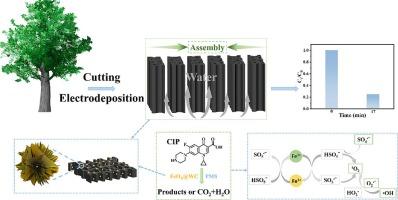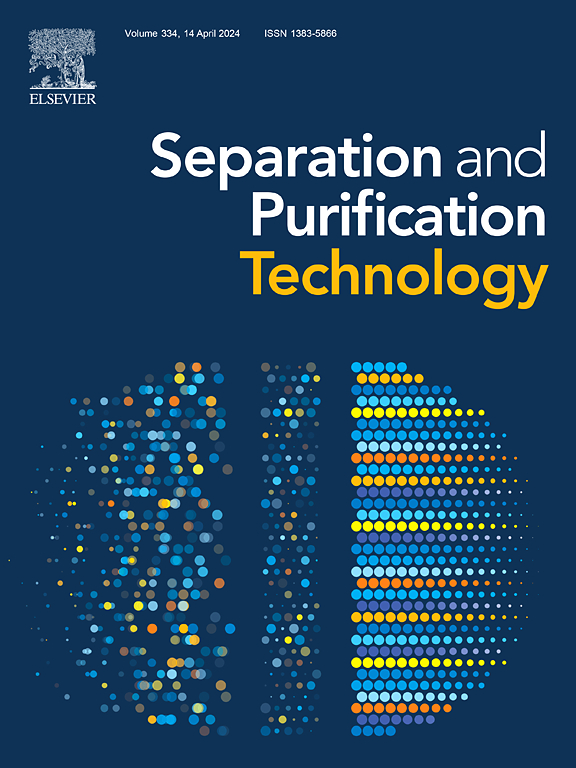Charcoal-based block catalyst boosts peroxymonosulfate activation for ciprofloxacin degradation
Abstract
Developing high-performance and low-cost heterogeneous catalyst is an urgent need to activate peroxymonosulfate (PMS) towards organic pollutants degradation. Herein, a novel block catalyst comprising of iron oxide nanosheets and wood carbon (FeOX@WC) is proposed to enhance PMS activation for ciprofloxacin (CIP) degradation. The resultant FeOX@WC achieved the removal rate of 86.6% in 10 min. This hardwood-derived catalyst remained the excellent degradation performance in a wide pH range of 2.0–11.0 and the co-existence of other organic pollutants. Inspired by water circulation pathway in tree, a flowthrough degradation device was constructed via using the hardwood-derived carbon block with large vessel channels and small fiber tracheids channels in diameter. The removal rate reached 75.4% in 17 min for mass pollution solution (450 mL), suggesting the good degradation ability in practical application. Quenching experiments, electron paramagnetic resonance and electrochemical analysis reveal that non-radical pathways including singlet oxygen and electron transfer occupy the dominant effect. Nine intermediates were identified and three kinds of degradation pathways were proposed. This work provides a charcoal-based block catalyst to enhance the degradation efficiency towards aqueous CIP pollutants.


 求助内容:
求助内容: 应助结果提醒方式:
应助结果提醒方式:


